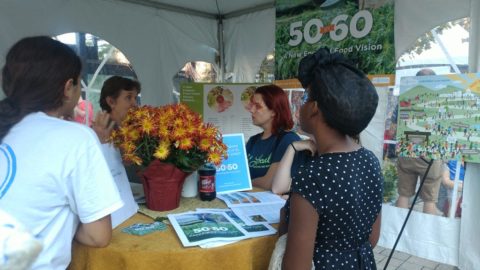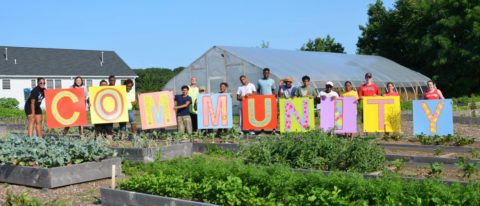As a Network Matures: Brushfires, Bake Boxes and (Calling) B.S.
December 2, 2019 2 CommentsA couple of months ago we had a meeting of the Food Solutions New England Network’s Process Team, and we spent part of our time checking in around our perceptions of where the network is heading in its next stage of development. For the past 8 years, FSNE has moved through a series of stages that have roughly correspond with the following:
- Building a foundation of trust and connectivity across the six states in the region as well as across sectors, communities and identities.
- Fostering alignment around a cohering vision (the New England Food Vision) and a set of core (non-negotiable) values, including a commitment to racial equity and food justice.
- Facilitating systemic analysis of the regional food system, which resulted in the identification of four leverage areas where the network sees itself as poised to contribute most: (1) engaging and mobilizing people for action, (2) connecting and cultivating leaders who work across sectors to advance the Vision and values, (3) linking diverse knowledge and evolving a new food narrative, and (4) making the business case for an emerging food system that encompasses racial equity and food justice, healthy food for all, sustainable farming and fishing, and thriving communities.
- Developing and beginning to implement a set of systemic strategies to encourage the continued emergence of this values-aligned regional food system, including a narrative and messaging guide; food, farm, and fisheries policy platform; set of holistic metrics to gauge the state of the regional food system; and people’s guide to the New England food system.
All of this effort, including the work of other regional networks (Farm to Institution New England, New England Grassroots Environment Fund, Northeast Farm to School Collaborative, Northwest Atlantic Marine Alliance, a community of practice of state-level food planning efforts, among others), has moved the region from a state of relative fragmentation, or disconnected clusters, to more of a multi-hub network.
With greater intricacy and diversity in this network of networks, the Process Team talked about the work of the next several years as being the following:
- Continuing to support foundational connectivity and alignment
- Moving from rooting to branching by creating more visible actions and assets beyond the underlying connectivity and alignment
- Shifting and sharing “backbone functions” currently held by one entity (the UNH Sustainability Institute)
- Cultivating a “brushfire approach” where, through greater density and diversity of connection, information and calls to action are spread in more timely ways
- Making the periphery more of the norm, by moving from just bringing people into the network to making sure we support their aligned efforts “out there”
- Moving from “seeding thoughts and cultivating commitments and leaders” to “managing the whole garden,” including supporting a growing team of people who are committed to creating conditions in the region for the Vision and core values to be realized
- Creating “bake boxes” that can readily be used and adapted by people and organizations in the region (examples include the regional Vision, the core values, the recently endorsed HEAL policy platform, a soon to be launched narrative/messaging guide, racial equity design toolkit and discussion guide, etc.)
- Calling B.S. on those who are “Vision and values washing” (saying they are aligned but acting in contrary ways) or are off point – see for example these recent letters in response to a Boston Globe editorial.
We also talked about what we see not changing:
- Continued convening, including Network Team meetings and an upcoming regional summit in 2020
- Ongoing capacity building, including the Network Leadership Institute and strengthening/deepening the racial equity commitment
- Communications, including newsletters, blog posts (sourced from throughout the region and beyond) press releases, social media streams
- Network weaving, including the crucial work of the FSNE Ambassadors
- Catalyzing critical conversations, including partnering with others in the region hosting important events (such as the upcoming Cows, Land and Labor Conference at Dartmouth College)
- Trust building, always trust building
And of course all of this is subject to adjustment and adaptation given complexity, uncertainty and the network nature of emergence. #humility



2 Comments
Thanks for sharing this Curtis, it’s great to have an overview of the phases a network has grown through, and to see holistic goals for the next stage being articulated. Your groupings struck me as being what could be called achievement goals and preservation goals, with the calling BS intention being an elimination goal. (I learned about holistic goals through my permaculture design course and describe the different types here: https://medium.com/colab-dudley/developing-holistic-goals-51ff9cbc21e)
I love the concepts of moving from rooting to branching, making the periphery more of the norm (I see this as nurturing fertile edges), and the move from seeding to managing the whole garden. Your intended activities bought to mind different kinds of scaling which I learned about reading this series of 3 posts https://inwithforward.com/2018/01/expanding-conceptions-scale-within-social-sector/ (h/t @sam_rye). Thank you for these real life examples of ideas that I noodle around, it’s great to read about.